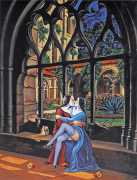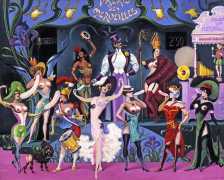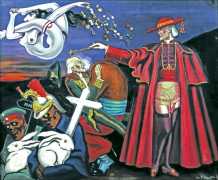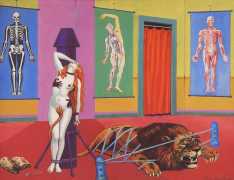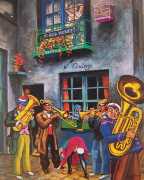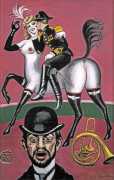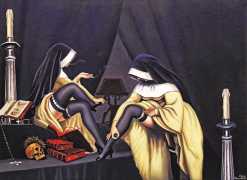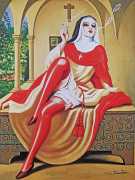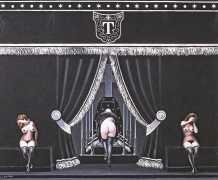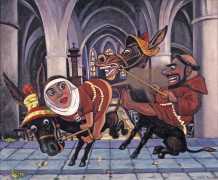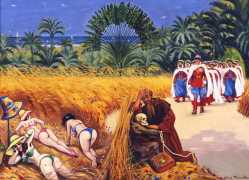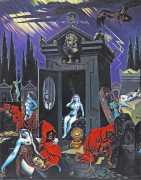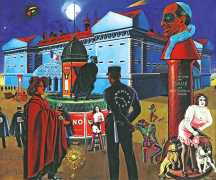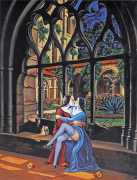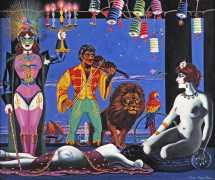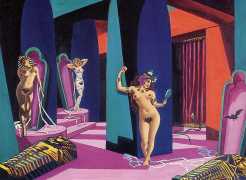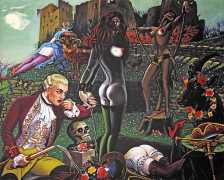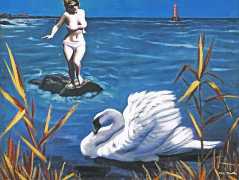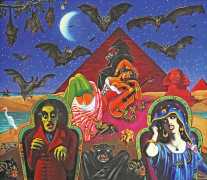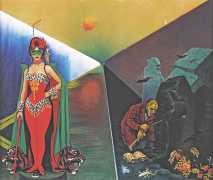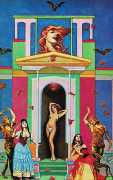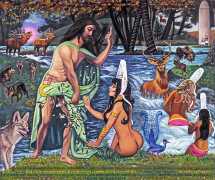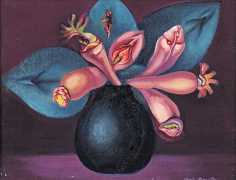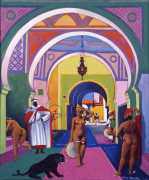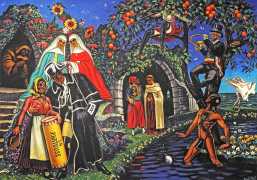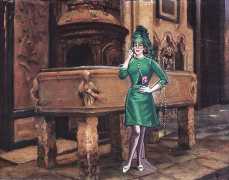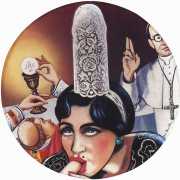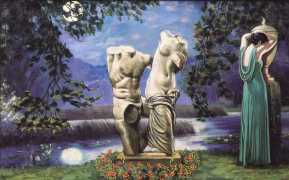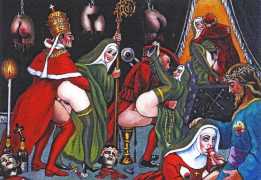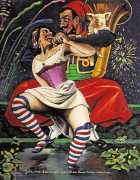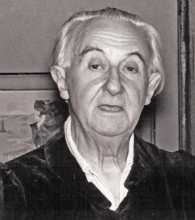 Clovis Trouille’s English-language Wikipedia entry rather disparagingly tells us that this original and talented French painter ‘worked as a restorer and decorator of department store mannequins, but is remembered as a Sunday painter’. The truth is that Camille Clovis Trouille was much more than a Sunday painter – arch-Surrealist André Breton considered him ‘the grand master of anything goes’, while on encountering his anti-war painting ‘Remembrance’ at the Salon des Peintres et Écrivains Révolutionnaires (Salon of Revolutionary Painters and Witers) in 1930, Salvador Dali and Louis Aragon were both impressed enough to write and congratulate him.
Clovis Trouille’s English-language Wikipedia entry rather disparagingly tells us that this original and talented French painter ‘worked as a restorer and decorator of department store mannequins, but is remembered as a Sunday painter’. The truth is that Camille Clovis Trouille was much more than a Sunday painter – arch-Surrealist André Breton considered him ‘the grand master of anything goes’, while on encountering his anti-war painting ‘Remembrance’ at the Salon des Peintres et Écrivains Révolutionnaires (Salon of Revolutionary Painters and Witers) in 1930, Salvador Dali and Louis Aragon were both impressed enough to write and congratulate him.
Trouille grew up in the small north-eastern French town of La Fère, and studied at the École des Beaux-Arts (School of Fine Arts) in Amiens from 1905 to 1910. With his very appropriate surname (‘trouiller’ means ‘to scare’ in French), Trouille paddled upstream in a river of Christian morality, military patriotism and bourgeois ostentation with lightness, irony and obstinacy. Very early in the First World War, in August 1914, he was drafted into the army, an experience which encouraged his lifelong anarchism.
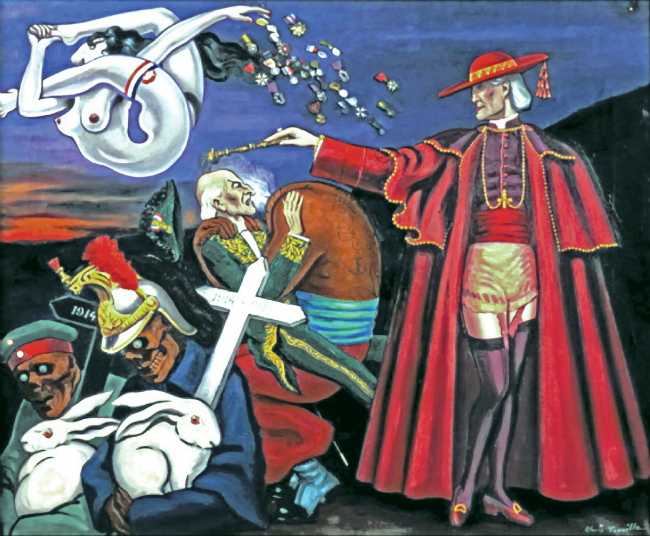 ‘Remembrance’ depicts two dead soldiers, one German the other French. In their hands they hold two white rabbits and two wooden crosses. On the battlefield a white-haired cross-dressing cardinal cloaked in red with a robe and garter belt bestows his blessing upon a military commander. A naked woman, her body contorted, wears a red, white and blue garter and leaves a trail of military medals behind her. If we did not know, this could as well be a painting from twenty years later, which is the case for many of Trouille’s works.
‘Remembrance’ depicts two dead soldiers, one German the other French. In their hands they hold two white rabbits and two wooden crosses. On the battlefield a white-haired cross-dressing cardinal cloaked in red with a robe and garter belt bestows his blessing upon a military commander. A naked woman, her body contorted, wears a red, white and blue garter and leaves a trail of military medals behind her. If we did not know, this could as well be a painting from twenty years later, which is the case for many of Trouille’s works.
Though not quite a ‘Sunday painter’, it is true that for most of his life Trouille only painted in his spare time, and his entire output is only around a hundred paintings. He often reworked his canvases, sometimes over decades, so it is difficult to date many of his paintings. He regularly exhibited his work at fairs and small independent shows, but made few sales, earning his living at a department store in Paris restoring and decorating mannequins and creating window displays. He chose to remain fiercely independent of mainstream galleries, though in 1947 he took part in the Exposition Internationale du Surréalisme (International Exhibition of Surrealism) organised by André Breton and Marcel Duchamp at the Maeght Gallery in Paris. It was twelve more years before he participated in another major show, the Exposition Eros Internationale Surréaliste at the Galerie Daniel Cordier in Paris.
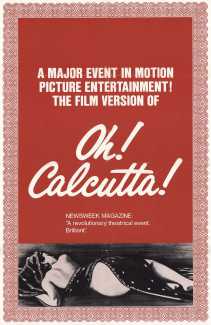 Towards the end of his life, Clovis Trouille experienced a certain success with his 1946 painting ‘Oh Calcutta’, which more than twenty years later was chosen as the title for the controversial 1969 musical revue by Kenneth Tynan, with Samuel Beckett as one of its librettists and John Lennon among its musicians. ‘Oh Calcutta’ was apparently a wartime anglicisation of the French compliment ‘Oh quel cul t’as!’, or ‘Oh what a lovely bottom you have!’ Trouille explained that when seen from the right angle, the perfect bottom makes a circle like the moon.
Towards the end of his life, Clovis Trouille experienced a certain success with his 1946 painting ‘Oh Calcutta’, which more than twenty years later was chosen as the title for the controversial 1969 musical revue by Kenneth Tynan, with Samuel Beckett as one of its librettists and John Lennon among its musicians. ‘Oh Calcutta’ was apparently a wartime anglicisation of the French compliment ‘Oh quel cul t’as!’, or ‘Oh what a lovely bottom you have!’ Trouille explained that when seen from the right angle, the perfect bottom makes a circle like the moon.
Always true to his ideals, Clovis Trouille wrote of himself, ‘Il est vrai que je n’ai jamais travaillé en vue d’obtenir un grand prix à une biennale de Venise quelconque, mais bien plutôt pour mériter dix ans de prison’ (It’s true that I never worked to obtain a grand prize at any Venice Biennale, rather to earn ten years in prison). With elements of Surrealism, Symbolism and Pop Art, Trouille was above all an anarchist, critiquing militarism, organised religion and capitalism equally. And he was undoubtedly an erotic artist, writing ‘Je peins ce que j’aime, je peins la beauté féminine. Pour moi tout est érotique. C’est le sentiment le plus merveilleux’ (I paint what I love, I paint feminine beauty. For me everything is erotic. It is the most wonderful feeling).
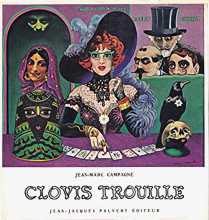 A website dedicated to Clovis Trouille and his work can be found here, with links to exhibitions and other Trouille-related resources.
A website dedicated to Clovis Trouille and his work can be found here, with links to exhibitions and other Trouille-related resources.
The best book about Trouille, his life and work, is Jean-Marc Campagne’s Clovis Trouille, published by Jean-Jacques Pauvert in 1965.

